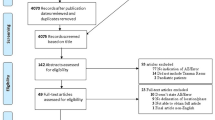Abstract
Purpose
To determine if preliminary radiology reports issued overnight (10 pm to 7 am) on adult trauma patients cause major changes of high clinical significance or patient harm.
Methods
Following extraction of preliminary and final radiology reports from the report server, presence of changes was determined by an automated text differential checker. If text changes were present, reports were then subsequently manually graded by an attending radiologist and placed in category by degree of severity. 81 weeks of trauma report data were analyzed by two faculty radiologists.
Results
Of the 6063 preliminary reports from 1214 separate overnight trauma patients, 65.5% had no changes in final report text. The remaining reports were graded: A 8.9% (503), B 17.2% (1005), C 7.0% (426), and D 1.3% (100). No reports demonstrated a major change of high clinical significance (E) or patient harm (F).
Conclusion
Most preliminary report changes were minor and had no clinical significance. Furthermore, the few that were deemed to be major changes were of little clinical significance, particularly in the setting of the other traumatic injuries that the patient may have sustained. No negative patient safety events were caused by an error in a radiology resident preliminary report.


Similar content being viewed by others
Data availability
The authors declare that they had full access to all of the data in this study and the author(s) take complete responsibility for the integrity of the data and the accuracy of the data analysis.
Code availability
Not applicable.
References
Cooper V, Goodhartz L, Nemcek A Jr, Ryu R (2008) Radiology resident interpretations of on-call imaging studies: the incidence of major discrepancies. Acad Radiol 15:1198–1204
Weinberg B, Richter M, Champine J, Morriss M, Browning T (2015) Radiology resident preliminary reporting in an independent call environment: multiyear assessment of volume, timeliness, and accuracy. J Am Coll Radiol 12:95–100
Gardner A, Lim G, Minard C, Guffey D, Pillow T (2018) A cross-specialty examination of resident error disclosure and communication skills using simulation. J Grad Med Educ 10(4):438–441
Gergenti L, Olympia RP (2019) Etiology and disposition associated with radiology discrepancies on emergency department patients. Am J Emerg Med 37(11):2015–2019. https://doi.org/10.1016/j.ajem.2019.02.027
Ruma J, Klein K, Chong S, Wesolowski J, Kazerooni E, Ellis J, Myles J (2011) Cross-sectional examination interpretation discrepancies between on-call diagnostic radiology residents and subspecialty faculty radiologists: analysis by imaging modality and subspecialty. J Am Coll Radiol 8:409–414
Kung J, Melenevsky Y, Hochman M, Didolkar M, Yablon C, Eisenberg, et al (2013) On-call musculoskeletal radiographs: discrepancy rates between radiology residents and musculoskeletal radiologists. AJR 200:856–859
Shah N, Hoch M, Willis A, Betts B, Patel H, Hershey B (2010) Correlation among on-call resident study volume, discrepancy rate, and turnaround time. Acad Radiol 17:1190–1194
Bruno M, Duncan J, Bierhals A, Tappouni R (2018) Overnight resident versus 24-hour attending radiologist coverage in academic medical centers. Radiology 289:809–813
Wildman-Tobriner B, Cline B, Swenson C, Allen BC, Maxfield CM (2018) Evaluating Resident On-Call Performance: Does Volume Affect Discrepancy Rate? Curr Probl Diagn Radiol. 47(6):364–367. https://doi.org/10.1067/j.cpradiol.2017.12.009
Maloney E, Lomasney L, Schomer L (2012) Application of the RADPEERTM scoring language to interpretation discrepancies between diagnostic radiology residents and faculty radiologists. J Am Coll Radiol 9:264–269
Tamjeedi B, Correa J, Semionov A, Mesurolle B (2015) Interobserver agreement between on-call radiology resident and general radiologist interpretations of CT pulmonary angiograms and CT venograms. PLoS One 10(5):e0126116. https://doi.org/10.1371/journal.pone.0126116
Peterson C, Moore M, Sarwani N, Gagnon E, Bruno MA, Kanekar S (2020) Resident-faculty overnight discrepancy rates as a function of number of consecutive nights during a week of night float. Diagnosis (Berl). https://doi.org/10.1515/dx-2020-0092
McWilliams SR, Smith C, Oweis Y, Mawad K, Raptis C, Mellnick V (2018) The clinical impact of resident-attending discrepancies in on-call radiology reporting: a retrospective assessment. Acad Radiol 25(6):727–732
Mellnick V, Raptis C, McWilliams S, Picus D, Wahl R (2016) On-call radiology resident discrepancies: categorization by patient location and severity. J Am Coll Radiol 13:1233–1238
Davenport M, Ellis J, Khalatbari S, Myles J, Klein K (2010) Effect of work hours, caseload, shift type, and experience on resident call performance. Acad Radiol 17:921–927
McWilliams S, Smith C, Oweis Y, Mawad K, Raptis C, Mellnick V (2018) The clinical impact of resident attending discrepancies in on-call radiology reporting: a retrospective assessment. Acad Radiol 25:727–732
Wildenberg J, Chen P-H, Scanlon M, Cook T (2017) Attending radiologist variability and its effect on radiology resident discrepancy rates. Acad Radiol 24:694–699
Hanna T, Loehfelm T, Khosa F, Rohatgi S, Johnson J-O (2016) Overnight shift work: factors contributing to diagnostic discrepancies. Emerg Radiol 23:41–47
Ruutiainen A, Durand D, Scanlon M, Itri J (2013) Increased error rates in preliminary reports issued by radiology residents working more than 10 consecutive hours overnight. Acad Radiol 20:305–311
Jakanani G, Botchu R, Gupta S, Entwisle J, Bajaj A (2012) Out of hours multidetector computed tomography pulmonary angiography: are specialist resident reports reliable? Acad Radiol 19:191–219
Ruutiainen A, Scanlon M, Itri J (2011) Identifying benchmarks for discrepancy rates in preliminary interpretations provided by radiology trainees at an academic institution. J Am Coll Radiol 8:644–648
Acknowledgements
William Murray
Author information
Authors and Affiliations
Corresponding author
Ethics declarations
Ethics approval and consent to participate
Per institutional IRB – HSPO, this study was determined to be exempt status. The study, however, was performed in accordance with HIPAA and institutional data governance guidelines.
Consent for publication
Not applicable.
Conflicts of Interest
The authors declare that they have no conflict of interest.
Additional information
Publisher's note
Springer Nature remains neutral with regard to jurisdictional claims in published maps and institutional affiliations.
Rights and permissions
About this article
Cite this article
Peterson, C., Moore, M., Gagnon, E. et al. How are our residents doing on trauma tonight? The frequency of overnight resident-faculty report discrepancies in trauma patients. Emerg Radiol 28, 1113–1117 (2021). https://doi.org/10.1007/s10140-021-01963-w
Received:
Accepted:
Published:
Issue Date:
DOI: https://doi.org/10.1007/s10140-021-01963-w




